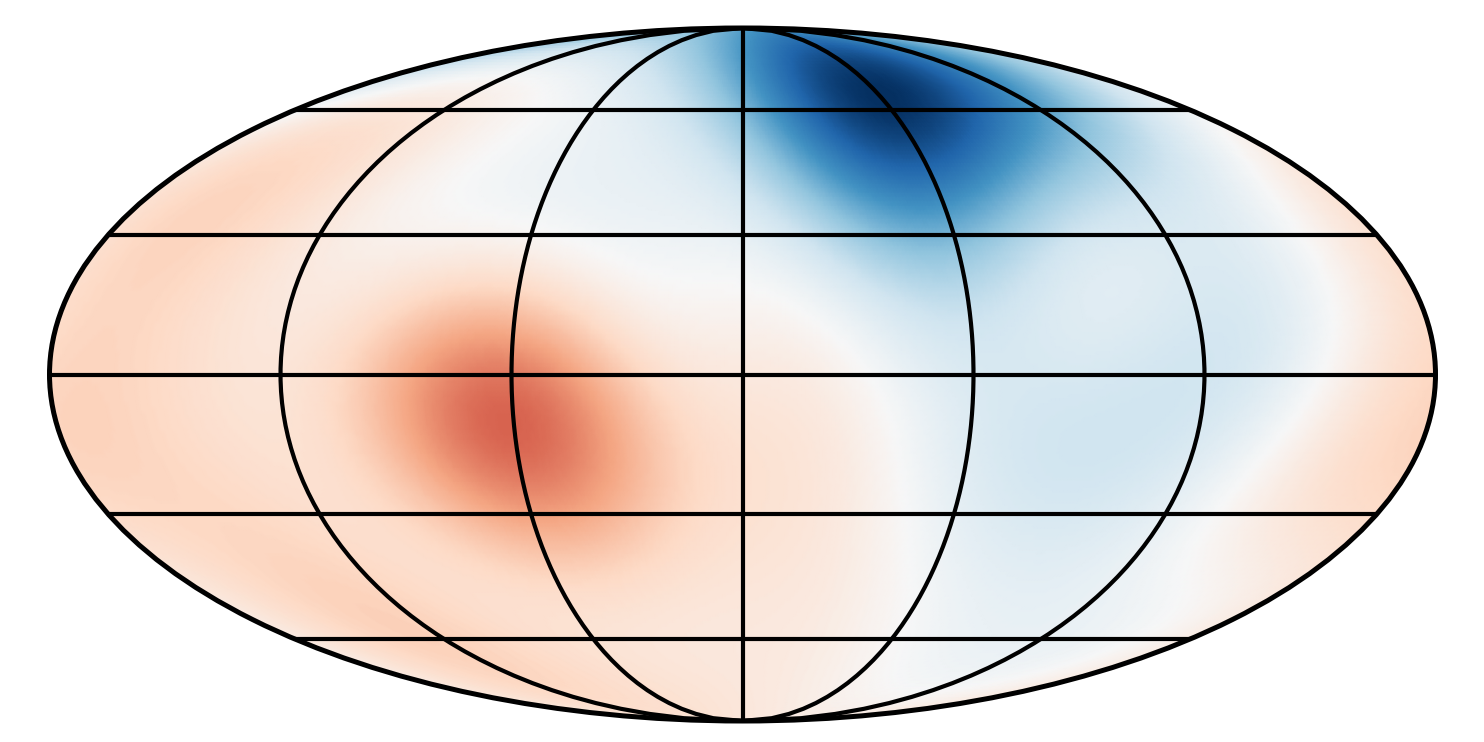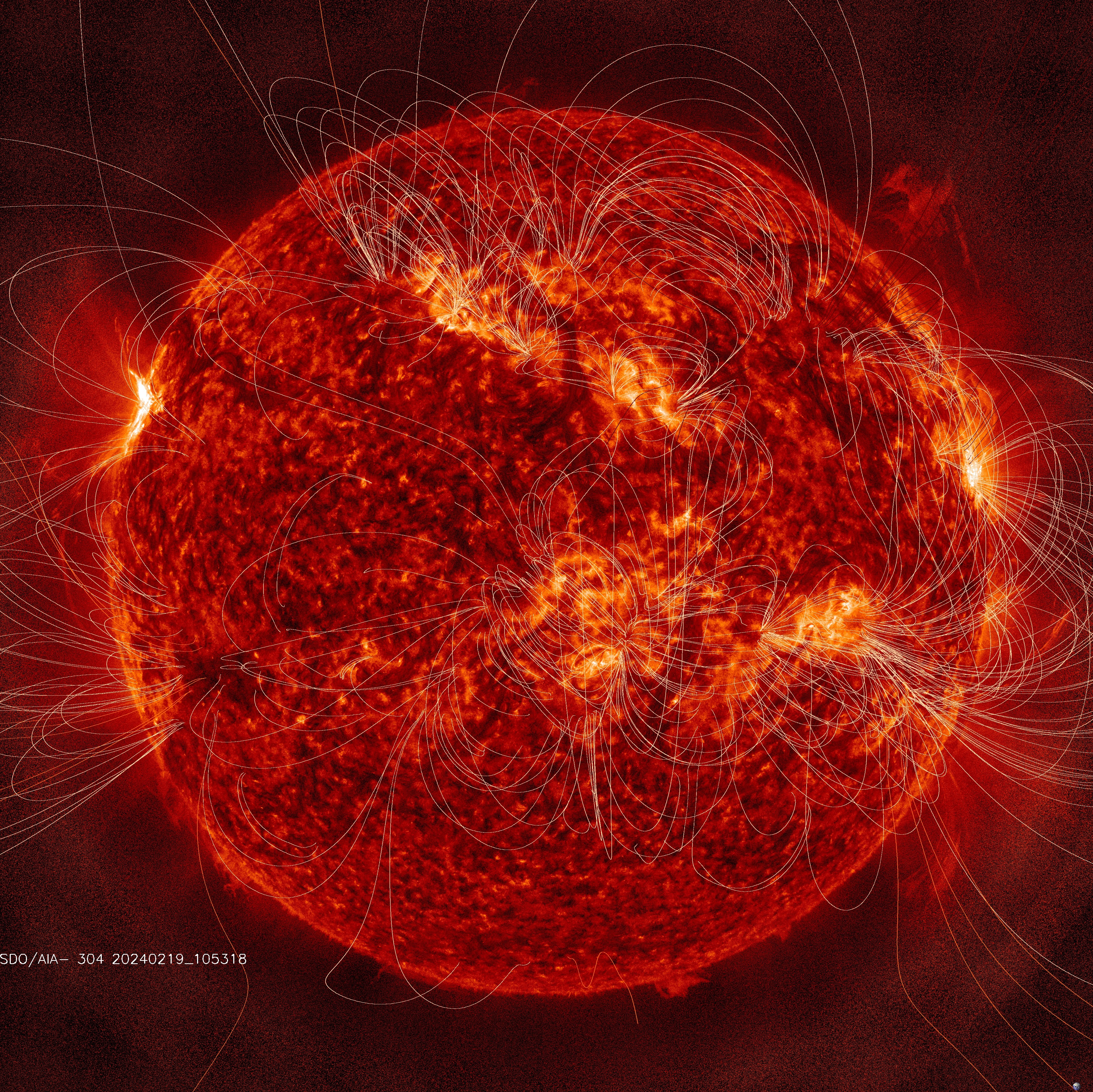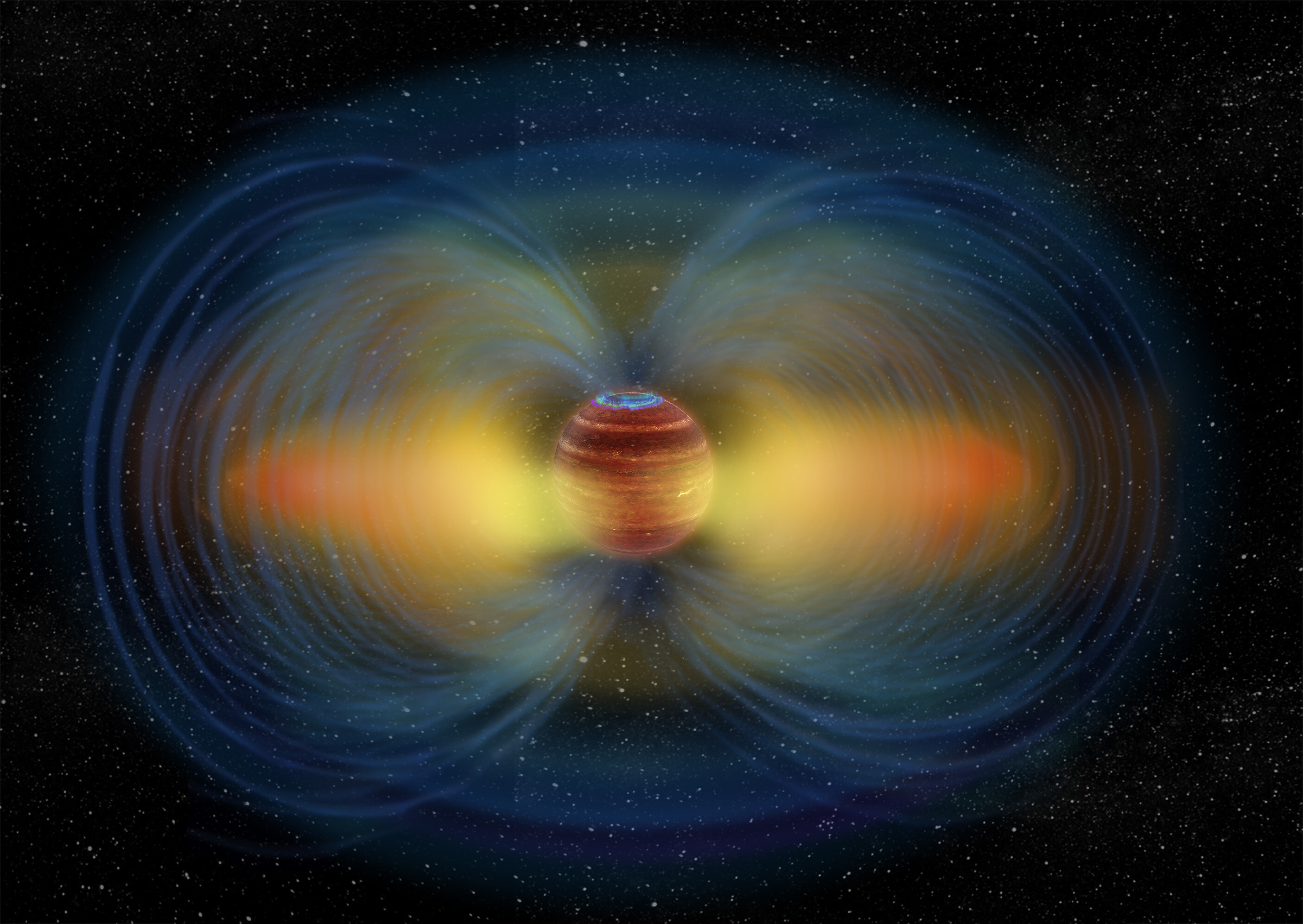- the formation of planetary systems
- the outflows of material via quiescent stellar winds and eruptive coronal mass ejections
- their spin evolution
- the erosion of atmospheres of orbiting planets
 The surface magnetic field of Proxima Centauri reconstructed using the Zeeman-Doppler imaging method by Klein et al. (2021). The star hosts a relatively strong magnetic field resembling a tilted dipole, with strengths reaching ~500 Gauss.
The surface magnetic field of Proxima Centauri reconstructed using the Zeeman-Doppler imaging method by Klein et al. (2021). The star hosts a relatively strong magnetic field resembling a tilted dipole, with strengths reaching ~500 Gauss.
In the brown dwarf and exoplanet regime, magnetically sensitive lines disappear, rendering the Zeeman effect useless. As a result, we have little-to-no knowledge of if and how magnetic fields manifest and evolve over time in sub-stellar objects, nor how they are impacted by the outflows of material from their host stars. However, another signpost of magnetism in sub-stellar objects is their auroral emission. This is thought to be driven by the acceleration of electrons in their magnetospheres, akin to what is seen on Jupiter.


Comparison of the magnetic field structure of the Sun (left) to that expected for a brown dwarf (right), signs of which are thought to manifest via distinct mechanisms. Image credits: Solar Dynamics Observatory, Chuck Carter.
The goal of this splinter was to highlight the current methods available for inferring magnetic fields on stars, brown dwarfs, and exoplanets, and their limitations. The splinter comprised of both invited and contributed talks, as well as a discussion section where 3 groups were tasked with outlining ways to address the following topics solicited from the speakers and participants:
- What do we need to pin down star-planet interactions?
- How do we determine field strengths and topology across the sub-stellar regime?
- How do we avoid pitfalls when scaling the solar system?
Splinter organizers
- Dr Robert Kavanagh (ASTRON/University of Amsterdam, the Netherlands)
- Dr John Sebastian Pineda (University of Colorado Boulder, USA)
- Dr Mary Knapp (MIT Haystack Observatory, USA)
Background image credit: Allison Li